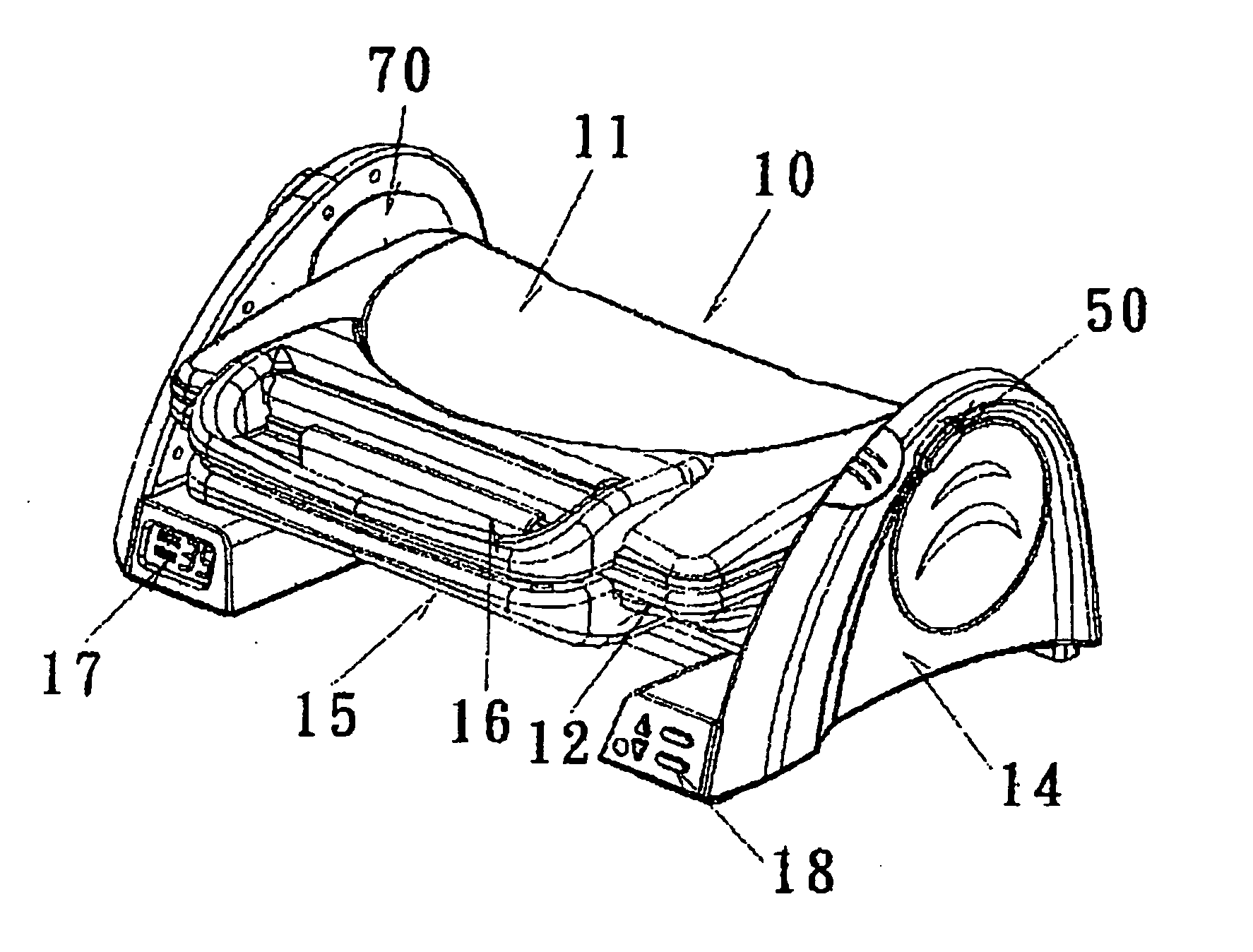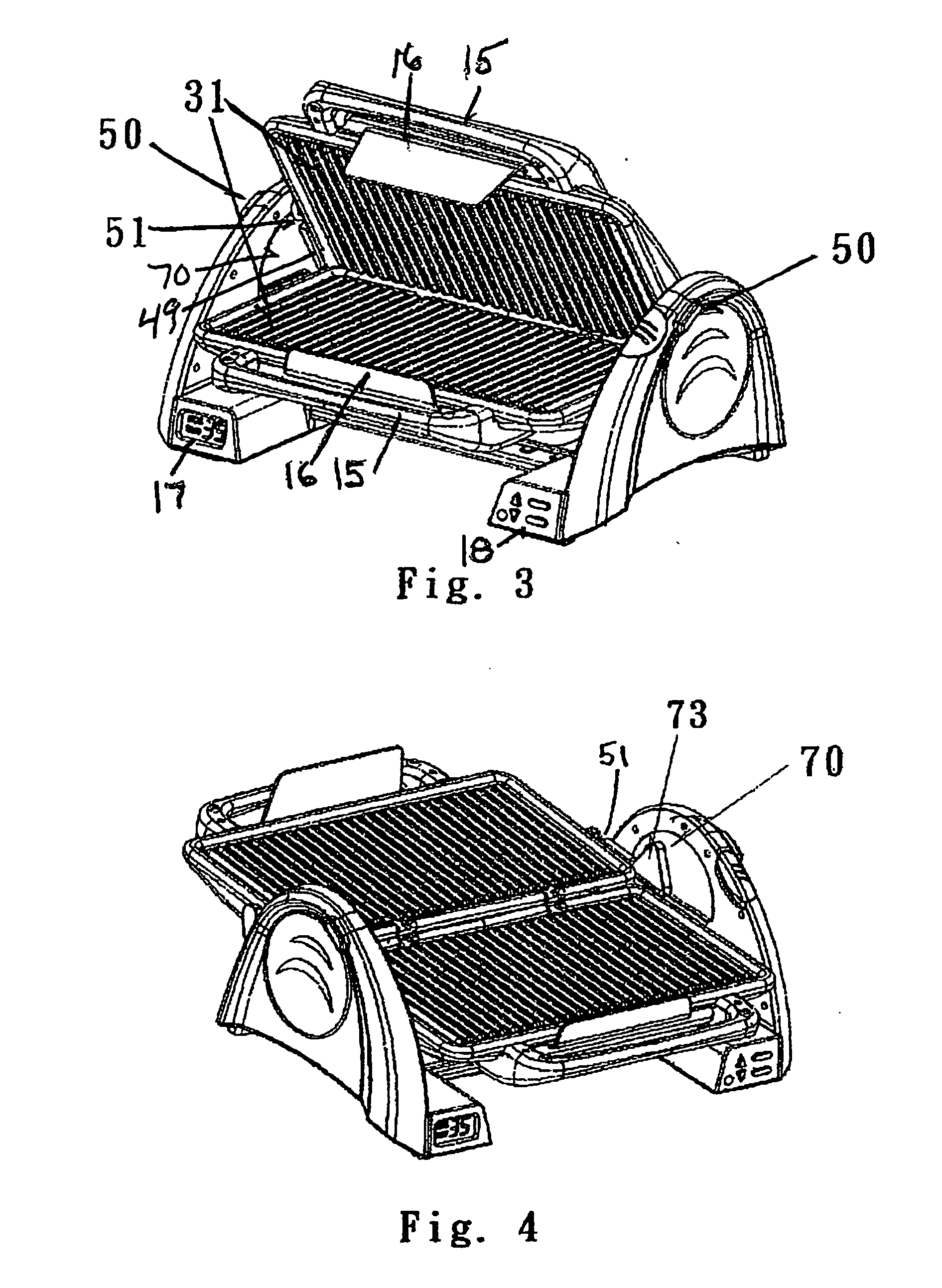Electric grill
a grill and electric technology, applied in the field of electric grills, can solve the problems of uneven cooking of food, complicated cooking system, cumbersome and cumbersome cooking system,
- Summary
- Abstract
- Description
- Claims
- Application Information
AI Technical Summary
Benefits of technology
Problems solved by technology
Method used
Image
Examples
Embodiment Construction
[0044] In the following is described the embodiments of the electric grill which is the present invention. In describing the embodiments illustrated in the drawings, specific terminology will be used for the sake of clarity. However, the invention is not intended to be limited to the specific term so selected, and it is to be understood that each specific term includes all technical equivalents that operate in a similar manner to accomplish a similar purpose.
[0045] Referring to the figures, FIG. 1 depicts a perspective view of an electric grill in accordance with the preferred embodiment of the present invention. As shown, the electric grill 10 has a top heating section 11 and a bottom heating section 12 attached to a support structure 14 by two hinges 70. The hinges 70 attach to the rear portion of both the top and bottom heating sections 11 and 12 which allows the top heating section 11 to pivot on its rear side such that the top heating section 11 lifts up from the bottom heatin...
PUM
 Login to View More
Login to View More Abstract
Description
Claims
Application Information
 Login to View More
Login to View More - R&D
- Intellectual Property
- Life Sciences
- Materials
- Tech Scout
- Unparalleled Data Quality
- Higher Quality Content
- 60% Fewer Hallucinations
Browse by: Latest US Patents, China's latest patents, Technical Efficacy Thesaurus, Application Domain, Technology Topic, Popular Technical Reports.
© 2025 PatSnap. All rights reserved.Legal|Privacy policy|Modern Slavery Act Transparency Statement|Sitemap|About US| Contact US: help@patsnap.com



